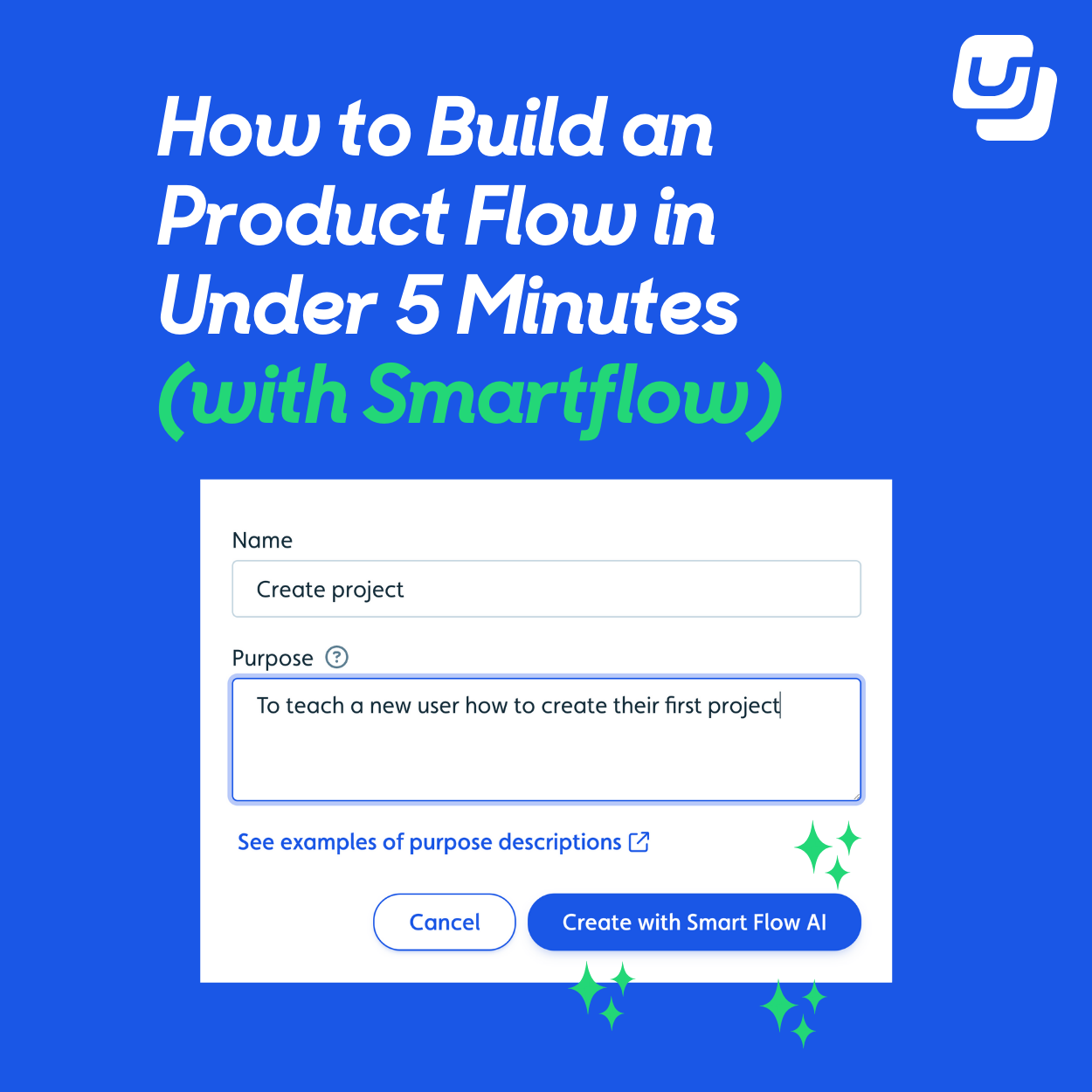User onboarding has now become one of the most important tools for success when it comes to SaaS products. An effective onboarding process can significantly impact user retention, feature adoption, and overall product success.
In a nutshell, user onboarding is like a movie trailer. It tells someone what it’s about, and convinces them to spend money on it. Just like how a great movie trailer stands out, a well-designed user onboarding process introduces the user to the product’s features and benefits through excellent UX and UI, guiding the user to be confident and comfortable in using your product to meet their needs.
However, creating an effective onboarding experience is no small feat. This comprehensive guide will explore 9 user onboarding best practices, providing actionable insights for product managers, product marketers looking to optimize their onboarding processes and create exceptional user experiences.
Let’s get started.

What is User Onboarding?
User onboarding is the process of guiding new users through your product with purposeful UX/UI design until they encounter the ‘aha moment.’
The aha moment is the first time when a user discovers the value of the product. It’s the moment when it becomes clear to the user that this product is exactly what they need in order to achieve their goals.
Once they get to this point, the user has internalized the value offered by the product, and they are more likely to commit to it.

That is why effective onboarding is so important. By leading users to recognizing what benefits they can get out of the product, it allows you to:
- Increase user retention
- Boost product adoption rates
- Reduce support tickets
- Improve overall user experience and loyalty
- Decrease churn rates
- Increase customer lifetime value
Now that we know what user onboarding is and why it’s so important, let’s get into the best practices.
1. Understand Your Users and Their Needs

Forget the onboarding for a second. Think carefully why your users need your product in the first place. What value are they looking to get out of your product? Knowing that makes all the difference.
In order to find that out, conduct user research to identify their goals, pain points, and preferences. Here are a few ways to get that started:
- Surveys and interviews with existing users
- In-app surveys for user satisfaction data
- Analyzing user behavior data
- Usability testing with new and existing users
- Creating detailed user personas
Once you have a thorough understanding of what your users are looking for, creating an effective onboarding process becomes much easier.
2. Segment and Personalize Every User Journey

Not all users are the same; they have different needs and expectations. Which is why you need to personalize the onboarding UX in order for it to be really effective.
In order to do this, first you should segment your users based on relevant criteria such as role, industry, or experience level, so that you can target them separately. Additionally, you can also do needs analysis at the onset of the user journey in order to figure out what their preferences are. For example, Canva asks after signup what users would be using its product for.
Once you have the different user personas figured out, you can tailor the onboarding process accordingly, and deliver in-app messages that fit each user type.
For instance, a user who’s completely new to your product might need detailed walkthroughs, while a returning user might prefer to dive right in and skip the welcome message. Personalization can make users feel more valued and understood, leading to higher engagement and satisfaction during their onboarding.
3. Use Onboarding Checklists to Keep Users on Track

If you’re at a restaurant and you’re overwhelmed by the menu, what do you do? You ask the waiter for recommendations. An onboarding checklist is essentially that. It gives users a structured path on how to get started with your product, helping users understand what steps they need to complete and what actions to take next.
An onboarding checklist can also give users a sense of accomplishment as they progress through the onboarding stages. For instance, an onboarding checklist might include steps like setting up a profile, exploring key features, and completing an initial task. These small wins can encourage your users to continue exploring.
4. Gamify the Onboarding Process

When you’re having a good time, things go smoothly. One way to make the onboarding process more enjoyable is gamification.
Onboarding and video games share quite a bit of similarities. Both involve entering a new space that you don’t know anything about. Both involve getting to know how you can navigate that world and interact with it. Finally, both are about accomplishing challenges that progressively get tougher but provide higher rewards. Video games do this spectacularly well by rewarding users and engaging them at the right moments. Adapting this approach to your onboarding can significantly increase user engagement and make the onboarding process feel less like a chore.
So here are some ways you can implement gamification into your onboarding.
- Celebrate user achievements with badges or rewards
- Use progress tracking to encourage completion of onboarding tasks
- Implement a points system for completing key actions
- Offer exclusive content as reward as users progress
- Use motivational messages to encourage users to continue their onboarding journey
5. Offer In-App Self-Service Resources

Whenever a customer is blocked, no customer success manager will be faster in resolving the issue than the customers themselves. This is why it’s essential to provide self-service resources that are readily accessible anywhere in the UX/UI of your product.
These can come in the form of help centers, FAQs, and tutorials that users can find wherever they are in your product. For instance, a searchable knowledge base that is always available in the bottom right of your product’s UI can help users quickly find answers to their questions.
Plus, this helps to reduce the burden on your customer support teams. It’s a win-win.
6. Re-engage Users To Boost Conversion and Retention

Users dropping off from the onboarding process is a concern for SaaS products across the board. But just because they went off the rail, it doesn’t mean it’s over. As Rocky once said, you didn’t hear no bell.
Instead of giving up, re-engage those users. Send them an email reminding them that they’re a few steps away from completing their onboarding. If you have a new update or a feature, remind them to show how much value they’re missing out on. You can also give tooltips, or push notifications. Try out various strategies to bring your users back to your product and get them on track again and convert.
This isn’t just for users that drop out. Existing users also need constant engaging to prevent them from churning as well as to get more value out of each user.
For example, if you have users who only use a small portion of your product, let them know that there are other features available that might be helpful for them. If you have ‘power users’, send them tutorials and webinars for diving even deeper into your product.
Don’t ever take your users for granted. Keep re-engaging them in order to raise your retention rate.
7. Offer a Multi-channel Onboarding Experience

Despite the fact that different messaging apps are practically all the same, everyone has one that they prefer, whether it’s Whatsapp, Messenger, or even Snapchat. Likewise, users have preferences when it comes to communication.
For example, you may think an in-app message is the best way to guide users through a product. After all, context is king right? But some people may just prefer to chat with a customer success manager, or watch detailed video tutorials.
Providing multiple touchpoints empowers users to choose what works best for them, which in turn raises the completion rate for your onboarding.
8. Let Users Opt Out of Onboarding

While onboarding is essential, it’s also important to give users the freedom to skip it altogether. They’re not children after all. Some users may feel confident navigating the product on their own and learn as they go.
So provide an easy way for them to skip steps or access a minimal onboarding experience. This flexibility can enhance user satisfaction. For example, including a “Skip Tutorial” button allows users who are already familiar with similar products to bypass unnecessary steps. This respects the user’s time and makes the onboarding process more efficient.
You can also make it easy for users to revisit skipped steps so that they know they can always go back if they’re blocked.
9. Continuously Measure and Optimize Onboarding

Most importantly, you need to always improve your onboarding. It’s not something you set and forget. For your onboarding to be truly successful, you need to continuously iterate toward perfection.
In order to do that, you need to keep a close eye on your user analytics, and identify potential problem areas.
Here are examples of key user onboarding metrics you should keep track of:
- Time to Value (TTV): Measures how quickly users reach the “Aha!” moment. A shorter TTV indicates an effective onboarding process, leading to higher user satisfaction and faster adoption.
- Activation Rate: Percentage of users who complete key onboarding actions. High activation rates show successful onboarding and engagement with essential features.
- Retention Rate at Various Intervals: Percentage of users who continue using the product at intervals (e.g., 7-day, 30-day, 90-day). This metric indicates user engagement and loyalty over time, helping identify areas for improvement.
- Feature Adoption Rates: Frequency of user engagement with specific features. High adoption rates highlight valuable features and inform improvements or promotions during onboarding.
- User Engagement Scores: A composite metric of engagement activities (logins, feature usage, interaction duration). High scores suggest ongoing value, predicting higher retention and lower churn.
- Churn Rate: Percentage of users who stop using the product. Reducing churn is critical; understanding what prevents churn helps improve onboarding and product features.
- Customer Lifetime Value (LTV): Total revenue expected from a single customer account over time. High LTV indicates significant long-term user value, driving sustained engagement and profitability.
Then, with those insights, you can update and optimize your onboarding process.
For example, if data shows that users are dropping off at a particular step during your onboarding, figure out what’s happening and make necessary adjustments to your in-app messages. This iterative approach ensures that your onboarding process evolves with user needs and expectations.
Kickstart the User Journey With Great Onboarding
As you implement these best practices, keep in mind that onboarding is not a one-time event. It is an ongoing process of nurturing and educating your users, so that they invest more into your product. Great onboarding is not a line. It’s a loop.
So pay close attention to your product analytics, customer success metrics, and user feedback to identify areas for improvement. Continuously iterate on your onboarding flow to ensure it meets the evolving needs of your users and your product.
And when in doubt, think about the user. Consider the entire user journey when designing your onboarding process. From the first touchpoint to long-term engagement, every interaction is an opportunity to reinforce your product’s value and guide users towards success. This way, you’re not just boosting initial conversion, but also raising retention at the same time.
Ready to take your user onboarding to the next level? Sign up for a free trial of Userflow and start implementing these best practices today. Our platform offers powerful tools for creating interactive walkthroughs, checklists, and personalized onboarding experiences that will delight your users and drive product adoption. With Userflow, you can easily create, manage, and optimize your onboarding process without extensive development resources, allowing you to focus on what matters most – creating an exceptional product that users love.
CONTENTS













%20(2).png)









